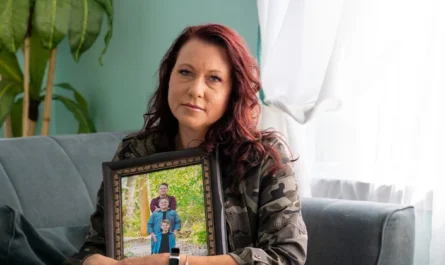President Trump’s sweeping new directive targets homelessness with forced institutionalization treatment, strict enforcement, and defunding of harm reduction models.
New Trump Order Mandates Civil Commitment, Criminal Crackdown to Address Homelessness Surge

The Trump administration issued a sweeping executive order on July 24 aimed at what it calls the “endemic vagrancy” and rising disorder in U.S. cities. Framed as a public safety response, the order, titled “Ending Crime and Disorder on America’s Streets,” directs the federal government to prioritize institutionalization, restrict aid to cities with lenient homelessness policies, and reallocate federal funding toward law enforcement and civil commitment programs.
The move marks a sharp turn away from housing-first models favored under previous administrations. The order emphasizes institutional treatment over voluntary services and explicitly condemns programs such as “safe consumption sites” and “harm reduction” strategies, calling them ineffective and enabling of illegal drug use.
Civil Commitment and Forced Institutionalization Take Center Stage in Policy Shift
At the heart of the executive order is a directive to restore civil commitment—the legal process of placing individuals with severe mental illness or substance abuse disorders into institutional care, often without their consent.
The Attorney General, working alongside the Secretary of Health and Human Services, is instructed to support state and local governments in expanding civil commitment programs and to challenge court precedents that have limited such authority in the past. The order calls for “maximally flexible” standards that allow the removal of individuals who “pose a danger to themselves or others” or who are “living on the streets and cannot care for themselves.”
Critics note the aggressive posture may trigger constitutional challenges related to due process and individual rights. However, supporters argue the move addresses rising public concerns about safety in cities, especially following record-high homelessness data from the final year of the Biden administration.
Grant Funding Tied to Tough Enforcement and Data Sharing with Law Enforcement
The order creates a system of incentives and penalties for state and local governments. Federal grant eligibility will now favor jurisdictions that actively:
- Enforce bans on urban camping, loitering, and squatting
- Crack down on illicit drug use
- Adopt policies for mandatory outpatient treatment
- Track homeless sex offenders under federal registration laws
Agencies including the Department of Housing and Urban Development (HUD) and the Department of Transportation must assess their grant programs to prioritize funds for states in compliance with these criteria.
The order also authorizes law enforcement and HUD officials to share health and personal data of individuals in federally funded housing programs with police “in circumstances permitted by law.”
Federal Resources Redirected Away from ‘Safe Sites’ and Toward Courts and Policing
Programs that operate “safe consumption sites,” distribute drug paraphernalia, or allow drug use on their premises will be targeted for funding cuts and potential legal action.
Instead, the order reallocates federal resources to:
- Expand drug and mental health courts
- Fund encampment removal efforts
- Increase forensic psychiatric bed capacity in jails and hospitals
- Prioritize in-custody release planning for incarcerated individuals
The administration’s stated goal is to shift chronically homeless individuals from public spaces into private housing and treatment facilities—but under mandatory or coercive models, not voluntary ones.
Echoes of 19th-Century Asylum Practices Resurface in Modern Policy

The language and intent behind the Trump Homelessness Executive Order bear a striking resemblance to the institutional practices of the late 19th-century American asylum system. During that era, civil commitment was the default method for managing individuals deemed mentally ill, poor, or socially deviant—often with no due process or path for release.
The movement began in the mid-1800s with a wave of state-funded “insane asylums” promoted as humane alternatives to jails or poorhouses. Reformers like Dorothea Dix advocated for large institutions where people with mental illness could receive treatment. But by the 1880s, these institutions had grown overcrowded and underfunded, turning into custodial warehouses rather than therapeutic environments. Commitment procedures often relied on vague standards like being a “danger to oneself or others” or simply “incapable of self-care”—the same phrases used repeatedly in the July 24 order.
Likewise, Trump’s order permits indefinite institutionalization for individuals who are “living on the streets and cannot care for themselves,” with no clear federal requirement for judicial oversight, periodic review, or individual consent—core problems that plagued 19th-century mental institutions.
Further, the executive order’s rejection of “harm reduction” mirrors 19th-century opposition to any strategies that tolerated deviant behavior, such as public intoxication or vagrancy. In that era, asylums often demanded abstinence, moral reform, and submission to authority—priorities echoed in Trump’s call to end funding for programs that “fail to promote treatment, recovery, and self-sufficiency.”
Critically, the asylum model eventually collapsed under legal and ethical scrutiny during the deinstitutionalization wave of the 1960s and 1970s, after numerous exposés revealed widespread abuse, neglect, and the warehousing of non-dangerous individuals. The Supreme Court’s 1975 ruling in O’Connor v. Donaldson held that a non-dangerous individual with mental illness could not be confined indefinitely without due process—a precedent that Trump’s order may be signaling it wants to reverse.
For Michigan, a state with a long history of institutional mental health care—including the now-closed Traverse City State Hospital and Eloise Asylum in Wayne County—the historical echo is especially sharp. The risk, advocates argue, is a return to a system where poverty and mental illness are punished through confinement, not addressed through voluntary care, housing, and community support.
The Trump administration’s framing of the issue as a public safety threat—rather than a public health challenge—revives 19th-century justifications that conflated homelessness, addiction, and mental illness with criminality and social disorder.
Michigan Could Face Policy Pressure Under New Federal Standards
With Michigan cities such as Detroit, Flint, and Grand Rapids struggling with housing shortages and opioid addiction, this order may force local governments to adjust policies or risk losing federal aid. In 2023, Detroit ranked 15th among U.S. cities for homelessness according to HUD’s annual assessment report [source: HUD.gov].
Local jurisdictions will now have to balance compliance with new federal criteria against Michigan’s longstanding use of housing-first initiatives—many of which may now be defunded.
What Comes Next: Legal Battles, State Pushback, and Implementation Challenges
Experts expect legal challenges to emerge quickly. “The primary misconception that exists among many members of the public is that gun violence, particularly mass shootings, results primarily from mental illness, and in fact that’s not true,” said Dr. Paul Appelbaum, director of Columbia University’s Center for Law, Ethics, and Psychiatry, in a 2023 article on mental health policy reform.
Civil liberties groups, public health researchers, and urban planners have also raised alarms. The American Civil Liberties Union and National Alliance to End Homelessness have historically opposed forced treatment and the criminalization of homelessness, calling them ineffective and inhumane.
Yet with federal funding now explicitly tied to enforcement and institutionalization, cities and states may face a difficult financial and legal reckoning.
Read More Interesting Feature Stories From ThumbWind
- Michigan Feature News Stories – Unveiling the diverse and vibrant people, captivating places, and remarkable events that come together to make the Great Lake State unique.
- Strange Political News – A sarcastic take on official news from around the U.S., exploring the absurdities that often arise in the political landscape.
- Michigan Hometown News – News and events from Michigan’s Upper Thumb region worth knowing.
Your Turn – Like This, or Hate it – We Want To Hear From You
Please offer an insightful and thoughtful comment. We review each response. Follow us to have other feature stories fill up your email box, or check us out at ThumbWind News




